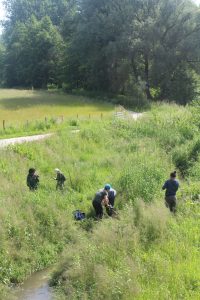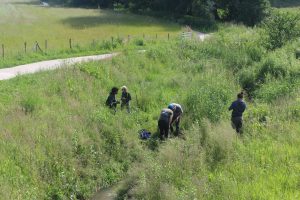Several temporary floodplains have already been constructed as part of our LIFE Belini project. These areas not only provide additional water storage during heavy rainfall, but also offer new opportunities for biodiversity. This became clear in the past few months during various audits
The ZITs are primarily hydraulic engineering structures to prevent flooding, but as part of the LIFE Belini project, features that promote biodiversity such as ponds, hedges, winter quarters for wildlife and piles of dead wood have also been installed.
But what will that accomplish? Of course, that is something that we too wanted to know. So last spring, the Contrat de Rivière Senne team, an expert from the Service Public de Wallonie and a dozen or so volunteer naturalists carried out an audit to take stock of the biodiversity in the temporary floodplains at Moulin Brancart and Braine-Le-Château.
What was the purpose of these audits? To identify as many different species as possible within a given time and space. Thanks to that audit, we can also evaluate the effectiveness of the facilities for fauna and flora
and the results were certainly worth it!
- There were more than 600 observations
- During that process, 137 species were identified at Moulin Brancart and 151 species at Braine-Le-Château.
- In each flood plain, we identified as many as 60 new species
These results indicate that these floodplains overwhelmingly provide added value.









